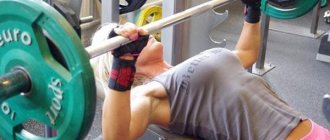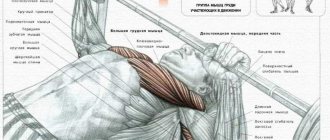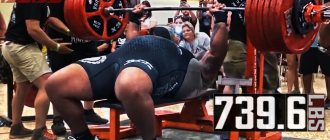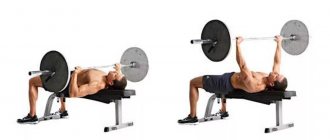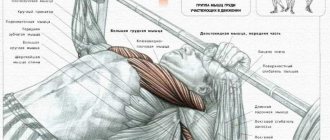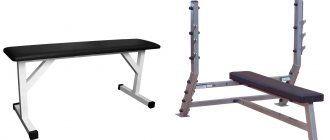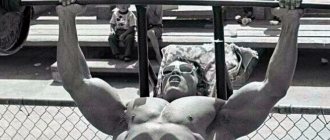This is one of those problems that is easy to fix. When you're dealing with dead spots in your bench press, you need to remember that there are several ways to fix the problem, but most won't work for you. So don't ride a dead horse!
In other words, if what you're doing isn't working, try something else. You have a lot of ammo.
I too have had problems with the bench press and sometimes it takes years to find the right exercise to solve it. Or you can find the right path right away.
Start lowering the barbell from the place where you will raise it
This is a very simple habit, but not everyone has it. Most lifters remove the bar from the rack and immediately begin to lower it without securing it. This becomes a habit and forces you to lower the bar diagonally, which will lead to the rise in the same manner. When you lift the bar toward the racks, it overloads your shoulders and takes the emphasis off your triceps.
After removing the bar from the racks, you must move it to the point where you will lift. It should be slightly higher than the place where you will lower the barbell. If you are lowering to the lower chest area, the bar should be secured above the lower chest before lowering. This will ensure a straight trajectory in both the eccentric and concentric phases.
Remember, the shortest distance between two points is a straight line.
What are the bench press variations?
The bench press can vary. There are quite a few variations of this great strength exercise.
Classic bench press
Simply lie down on a bench, plant your feet firmly on the floor for balance, and grab the barbell with a medium or wide grip. Perform flexion and extension of your arms until the bar touches your chest.
Powerlifting press
This is a special form of bench press. Performed with a strong deflection, on the bridge. But be sure to follow the rules: the upper back and buttocks must touch the bench.
This form of the press allows you to reduce the amplitude of the exercise and allows you to use the strongest body position. This option is used in powerlifting competitions in order to squeeze out as much weight as possible.
However, bench press lovers should be warned against thoughtlessly using this option. Without special training and development of flexibility, you risk serious injuries and sprains.
Bench press with limited amplitude
When performing a bench press, in this case the amplitude of movement of the barbell is artificially limited. For example, they put some kind of block on the chest so that the bar does not reach the chest, but stops 5-10 cm from it. This option makes sense, since the structure of muscle work and nerve impulses changes.
Another variation of the bench press with limited amplitude is the barbell bench press. Here you also do not have the opportunity to lower the barbell to your chest, since your elbows touch the floor first.
There are possible variations of the press in which the amplitude of the exercise is limited from above. That is, you do not straighten your arms to the end, stopping the barbell in the middle of the trajectory.
These presses must be performed under the supervision of a training partner.
Bench press in a power rack
A power rack is a special exercise machine with horizontal supports for the barbell. Using a power rack, you can set the supports to the desired height and perform a variety of strength exercises without the risk of being crushed by the barbell.
Performing bench presses in a power rack is one of the safest options if you don't have a partner nearby.
Smith Machine Bench Press
The Smith machine is a special simulator in which the barbell moves strictly along straight vertical guides. In this case, the bar can be fixed at any convenient height. The Smith machine eliminates the possibility of falling with the weight and allows you to safely press without the help of a partner.
As a rule, the Smith machine press is done on an incline bench.
Incline Bench Press
This variation of the barbell or dumbbell press is used to develop the upper parts of the pectoral muscles (clavicle area), which are difficult to develop with a regular bench press.
Many bodybuilding and fitness athletes do not do the usual version of the bench press at all, replacing it with the incline press.
Bench press on an incline bench
Bench presses with dumbbells
Unlike the barbell bench press, dumbbell presses have a number of advantages and disadvantages.
Benefits of dumbbell presses: Wider range of motion allowing for improved pectoral shape and flexibility. You can train with dumbbells at home. Dumbbell presses include many small stabilizer muscles in your workout.
Disadvantages: inability to perform bench presses with very heavy weights. It is impossible to perform the exercise with a dumbbell in each hand equal to half the weight of the barbell with which you are used to doing bench presses. You can usually perform the same number of repetitions with dumbbells weighing about 35-40% in each hand. This is due to the absence of a rigid biomechanical contour when working with dumbbells, which appears when working with a barbell. And this does not allow you to include all large muscles in the bench press. Efforts are dissipated to stabilize the position of the dumbbells.
Therefore, dumbbell presses are more appropriate in programs for general physical development and muscle mass. But more strength should be developed with a barbell.
Incline Dumbbell Press
Strengthen the top
There are several exercises that can help you strengthen the muscles that perform the push. They are best done using the MU method. The best exercise to combat weak pressing is the 3 or 4 board press. Lower the bar onto the boards, pause and press up. In extreme cases, you can use mini bands.
The second exercise that works very well is the chain floor press. The floor press is done in the same way as a regular bench press, except you lie on the floor. Work with about 60-70% of your best bench press, then start adding one chain to the bar on each side for each set. When you can't add any chains, call it a day.
Find solutions to other bench press problems here.
We'll put the pressure on
In the bench press, there are some nuances associated with the technique of performing this exercise. As a rule, the entire movement is divided into certain phases, such as stall, dead center or boost. Since the bench press technique does not always come as easily as we would like, many athletes have to spend a lot of time practicing the correct bench press technique.
In order for an athlete to be able to conquer the target weight, it is absolutely necessary for him to clearly work out the trajectory of the barbell, because the result ultimately depends on this. Quite often, even some experienced athletes make mistakes when lifting the barbell, shifting it not towards the head, but towards the abdomen, from where it is no longer possible to lift anything, or simply moving the apparatus straight up. The correct trajectory of the bar starts from the bottom of the chest and goes to a point above the shoulders, where it is held on straight arms. As a result, the lifting line of the barbell ideally looks like an arc, or at least like an inclined straight line towards the head.
Pressure , as practice shows, is best practiced together with the so-called dead point. There are many special exercises for training the push-up. Remember that for a powerful bench press, an equally powerful push-up is absolutely necessary. In order to develop a good push-up, include special push-up exercises in your training.
One such exercise is the bar press. The essence of the exercise is that bars or any other improvised means that replace them are placed on the chest, after which the barbell is pressed, touching these bars and not the chest. That is, in this way, the amplitude of movement is reduced and the work is focused, on pressing. In this case, it is advisable to use a weight approximately 10-30 kg higher than your usual working weight, and repetitions can be done about 4-6. Remember that this push-up exercise should be performed after a good warm-up. Which, by the way, can be an ordinary bench press. When doing push-up training like this, always vary the height of the bar so that the muscles do not get used to the same distance of the barbell path and the amplitude constantly changes.
Another way is to press from a dead point. For this exercise you will need to use a Smith machine or a power rack. By installing the stoppers in a position in which the bar is located 10-20 centimeters above chest level, we also increase the weight by 10-30 kilograms from the worker. How much to increase the weight depends on the height of the bar. The essence of the exercise is that after each time you squeeze the barbell from the stoppers onto straight arms, you return it to its place and relax. After which, which is very important, you again squeeze the barbell from a relaxed position.
If at first you don’t succeed in getting up from a relaxed position, don’t despair, this is normal. It usually takes some time for all the necessary muscles to engage. This exercise should also only be performed after a good warm-up before the bench press.
Powerlifters prefer not to increase body weight, as this threatens to move to another category. Do not forget that with the same weight, an athlete with a height of 160 cm will be stronger compared to 180 cm. Not so scary, for example, Ed Cohen showed the best results in the category up to 100 kg, being slightly taller than 160 cm.
Similar articles:
- How to replace the bench press
- Bench press training
- Bench press technique
- Bench press breakdown
- Ways to Increase Bench Press
Did you like the material? Share the link with others!
Do you want to be the first to know about site updates?
(2 Votes)
Add a comment
PART 1: SIZE, TOUCH, USE
Size and specifications
There are many boards. Starting from 1 and up to 5 boards. There are also various soft pads and of course the Manpon from EliteFTS. Each pressing block has its own characteristics. Here are some general characteristics from Dave:
1 board The movement should be exactly the same as in a regular bench press. “I always tell guys, drop, tap, press and connect your elbows” - Dave Tate. 2 Boards These boards will place the barbell exactly where you will start to push your elbows apart if you are not using a tank top. 3 boards These boards will make you restrain yourself. 4-5 boards “It's pretty much a muscle-only lift,” says Dave. “These are lockout boards.”
Manpon Manpon is a PVC roller cut in half lengthwise with a handle at the end. It is light and comfortable. You can slip it right under your tank top and don't have to be balanced across your chest like a board or tied with a belt. Manpon prevents your elbows from falling too low and also takes pressure off your shoulders.
Soft lining This is similar to Manpon. The soft pad doesn't restrict the trajectory as much as boards do. Therefore, you can lower the bar and still have support from the padding.
NON-STANDARD SPACERS
What boards should I use?
You can't just tell someone, “Oh, you've got a bad lockout. Use 3 boards." The position of the elbows is the criterion. You should be looking at the distance between your elbow and the floor, not at the boards and bar. “Keep in mind that even though everyone says 4 boards is a 2-inch lockout, it doesn't matter,” says Dave. “Everyone’s arm length is different, so one person will need 2 boards and another 3 for the same phase of the press.”
In general, 1 plank involves the chest and lats, 2-, 3-, and 4-boards involve more of the triceps. Therefore, the higher the boards, the more the shoulders are stabilized. If an athlete has trouble with the starting position on the bench press, high boards can help. Pause at the top. The lower the elbows go, the greater the rotation in the shoulder joints. Dave uses 1 or 2 boards so his elbows are level with the bench. Dave states, “It’s okay for me to do a full-range bench press, but I’m not going to compete. The risks outweigh the benefits."
Difficulty releasing the barbell from the chest
Explosive push-ups to break through sticking points
The first option is shown in the picture - you need to push off strongly from the floor, clap your hands at the top point and return to the starting position. This option is suitable if you do not have steps, rubber mats or tall wooden blocks on hand.
This is the preferred option for performing explosive push-ups. You place 2 of these steps parallel to each other, approximately two widths apart from your shoulders. Prepare for push-ups - take a stance BETWEEN the steps, place your hands on the floor shoulder-width apart, at the bottom of the exercise you push strongly with your hands and at the top point do not clap your hands, but spread your arms 2 widths apart from your shoulders and land on 2 steps that are on the left and to your right. It looks like this - you push up from the floor with force, lift your hands off the ground, at the same time spread your arms to the sides and land on the steps.
Once you have your hands on the steps, you again do a full push-up from them, your hands are in the air, then you return your hands to shoulder width and land again between the steps.
Features of the explosive push-up technique
In this exercise, the main thing is to feel the chest and shoulders. On each push-up, you must give your best - throw yourself as high as possible, and when landing on the steps, lower your chest as low as possible at the lowest point so that the stretch is maximum (without fanaticism).
You should feel the power in your chest increase with each repetition, the whole point here is to push yourself off the floor with great power, thereby simulating the barbell breaking off the chest, which is exactly what we are trying to develop.
In the future, the height of the steps will not be enough for you, because... you will be able to push yourself much higher. Instead of the steps or together with the steps, place everything that is possible - deadlift blocks, bars, boards, mats, etc.
Perform the exercise in three sets at least 6-8 times.
Speed press to overcome sticking point
Do the classic bench press, with 50-60% of your 1RM (1RM is one repetition maximum, i.e. your maximum bench weight for one rep). If you're benching 100kg, hang 50-60kg, get into the starting position for the press, but instead of pressing the normal way, jerk the barbell up with great force on each rep, then calmly lower it back down. With each repetition, you should rip the barbell off your chest with more and more force, give it your all in this exercise. Also do 8 repetitions in three sets.
Summary:
Include explosive push-ups and speed presses in your arsenal and you will be able to rip the barbell off your chest without any problems.
